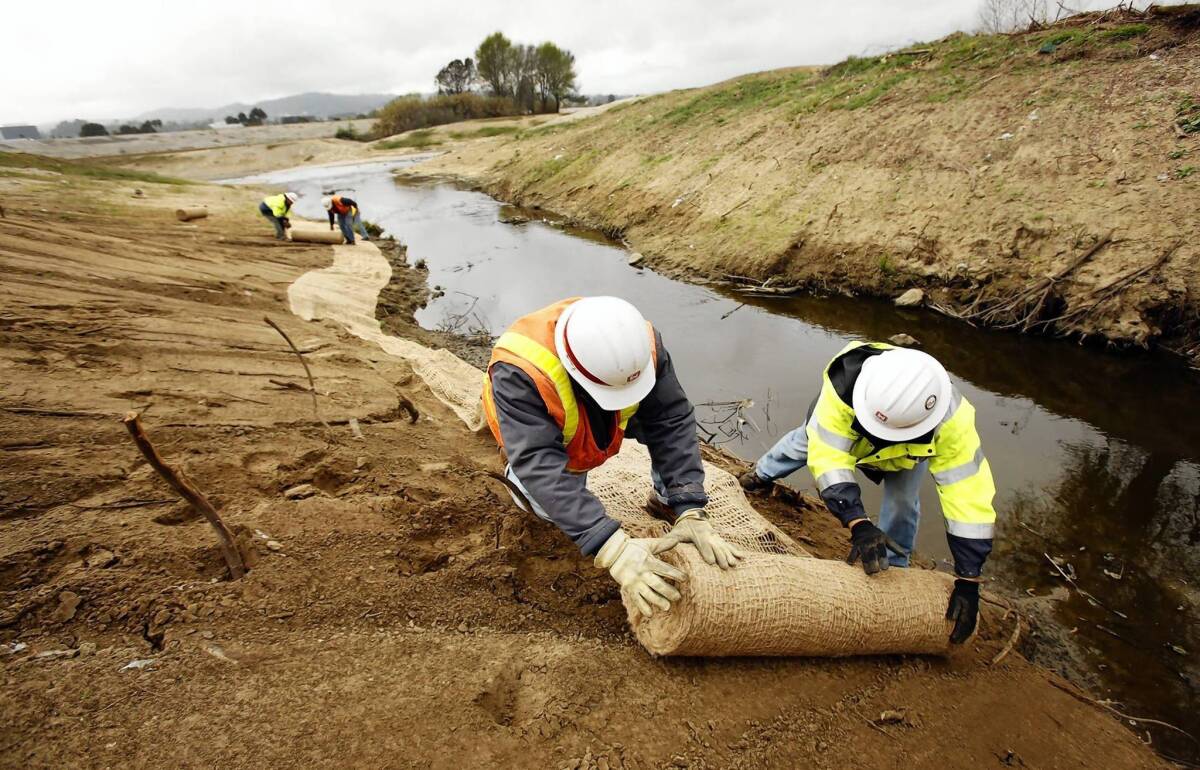Army Corps of Engineers puts Sepulveda Basin work on hold

- Share via
Bird watchers angered by the destruction of 43 acres of a former wildlife preserve at Sepulveda Basin got a promise from the U.S. Army Corps of Engineers on Tuesday that it wouldn’t remove any more vegetation until at least mid-September.
Tomas Beauchamp, a corps spokesman, told the Los Angeles City Council that further work on the so-called South Reserve, south of Burbank Boulevard and north to the base of the dam, is on hold, in part because nesting birds have been discovered in the habitat.
The extra time will also permit corps officials to meet with stakeholder groups outraged by the destruction of willows, mule fat, coyote brush and elderberry trees in December with little prior notice. Beauchamp, however, stopped short of saying that no further work would be done.
“We’re committed to stopping that … until we come up with a plan that looking ahead ... meets our needs as well as the environmental community’s needs,” Beauchamp told the council.
Audubon Society members in late December came upon the newly plowed reserve during an annual Christmas bird count. In January, Councilwoman Jan Perry asked for a halt to further loss of habitat, including marshes visited by waterfowl, until the corps could meet with environmental activists and community groups to explain its action.
Much of the area’s vegetation had been planted in the 1980s, part of a corps project that turned that portion of the Los Angeles River flood plain into a designated wildlife preserve. But the preserve was reclassified in 2010 as a “vegetation management area” under corps control.
The corps, as part of a five-year plan, wanted to remove non-native trees and grasses that have grown lush and high over the last 30 years and replace them with native varieties. Corps officials said changes were necessary because the dense groves had become a magnet for homeless encampments rife with drug dealing and sex acts.
On Tuesday, the council agreed unanimously that the Bureau of Sanitation will lead a series of meetings between stakeholders and corps officials over the next several months to work out an acceptable restoration plan.
Perry, a former mayoral candidate who represents South Los Angeles, said she was motivated to act because the Sepulveda Basin’s habitat had inspired her to create similar wetlands in her own district.
“It took years for this habitat to develop and now we have to restore it,” she said.
catherine.saillant@latimes.com
More to Read
Sign up for Essential California
The most important California stories and recommendations in your inbox every morning.
You may occasionally receive promotional content from the Los Angeles Times.














